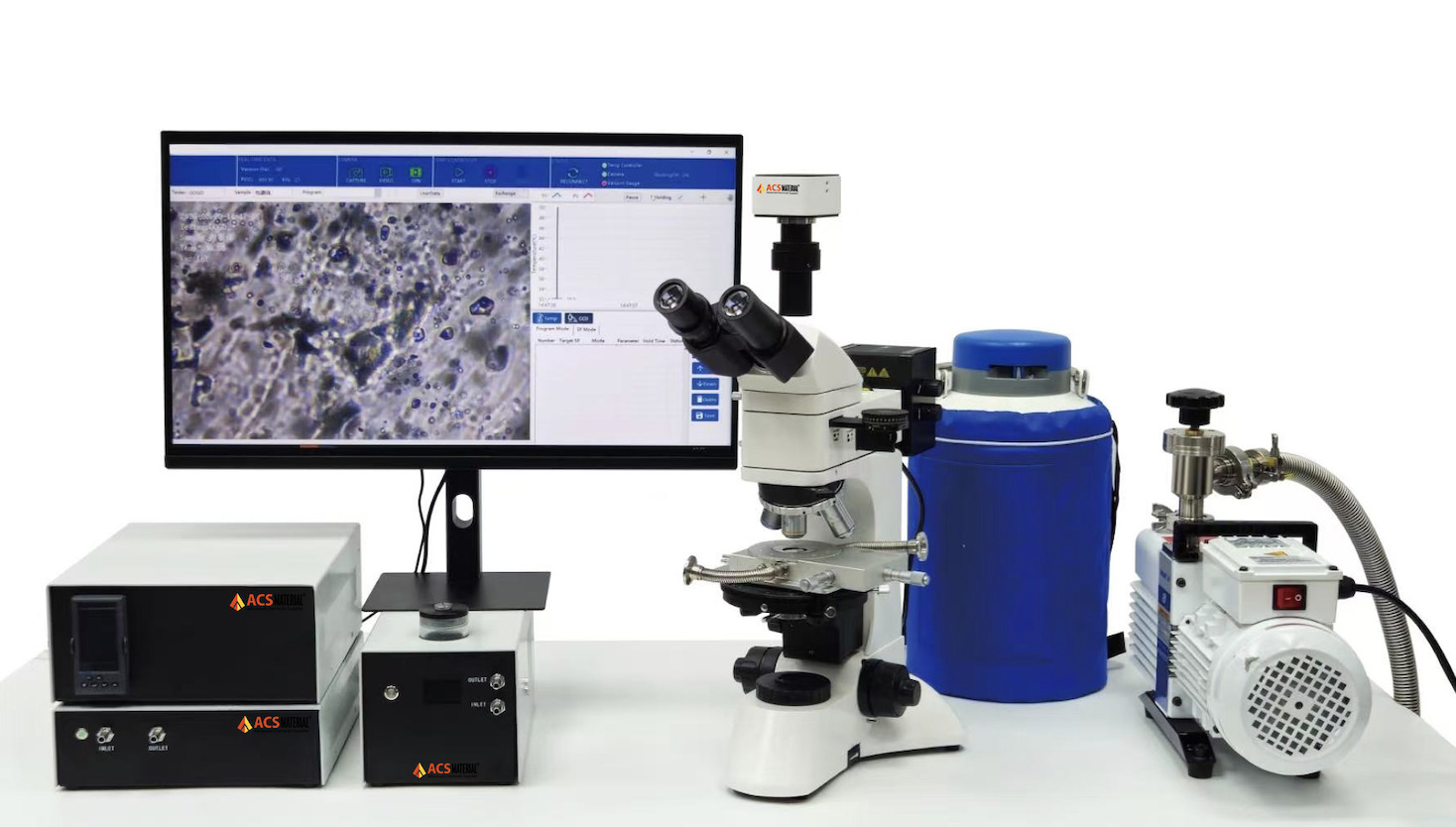-
Application for InSitu Pro™ Optical Heating and Cooling Stage
Sep 05, 2025 | ACS MATERIAL LLCInSitu Pro™ Optical Heating and Cooling Stage is an experimental device that integrates microscopic observation with temperature control technology. It is widely used in materials science, physics, chemistry, biology, and other fields. By precisely controlling temperature while observing the microstructural changes of samples in real time, optical heating and cooling stages provide critical technical support for materials research and have enabled breakthrough progress in multiple disciplines.
Core Functions of Optical Heating and Cooling Stages
Precise Temperature Control
Supports a wide temperature range from low to high, with control accuracy up to ±0.1 °C.
Can simulate material performance under extreme conditions, such as phase transitions, thermal expansion, and thermal decomposition.
Microscopic Observation
Equipped with high-magnification microscopes (e.g., optical, confocal, or infrared microscopes) to observe microstructural evolution during heating and cooling.
Supports multiple observation modes including transmission, reflection, and fluorescence, adaptable to various material types.
Dynamic Analysis
Integrates cameras and image processing software to record morphology changes at different temperatures, generating dynamic videos or time-series images.
Can be combined with other analytical techniques for multi-scale characterization.
Key Applications in Materials Research
Phase Transitions and Crystal Structure Studies
- Use cases:
- Investigating solid-state phase transitions in metals (e.g., austenite → ferrite transformation in steel) and eutectic reactions in alloys.
- Analyzing crystal structure transformations in ceramics and semiconductors.
- Observing polymer melting, crystallization, and glass transition.
- Breakthroughs:
- Revealing nucleation mechanisms, interface migration, and kinetic parameters during phase transitions.
- Providing theoretical guidance for optimizing heat treatment processes (e.g., quenching and annealing temperature control).
Thermal Expansion and Thermomechanical Properties
- Use cases:
- Measuring coefficients of thermal expansion (CTE) and studying thermal stress effects on material stability.
- Analyzing interface cracking in composites (e.g., metal matrix composites, CFRPs) under thermal cycling.
- Breakthroughs:
- Uncovering mechanisms of low-expansion materials (e.g., Invar alloys, cordierite ceramics), advancing precision instrument manufacturing.
- Optimizing thermal barrier coatings for aerospace engines, improving thermal matching and durability.
Oxidation and Corrosion Studies
- Use cases:
- Simulating high-temperature oxidation (air or oxygen atmospheres) for metals such as steels and titanium alloys.
- Observing corrosion under salt spray or humid-heat conditions (e.g., coating delamination, rust propagation).
- Breakthroughs:
- Revealing mechanisms of oxide film formation and protection, guiding anti-corrosion coating design.
- Developing new high-temperature oxidation-resistant materials (e.g., thermal barrier coatings, oxidation-resistant alloys).
Polymers and Liquid Crystal Materials
- Use cases:
- Analyzing polymer melting, crystallization, and chain conformational changes.
- Studying liquid crystal phase transition temperatures, texture evolution, and optoelectronic responses.
- Breakthroughs:
- Optimizing polymer processing techniques (e.g., injection molding, extrusion) for better performance.
- Designing advanced LCD materials with faster response and higher contrast.
Biomaterials and Pharmaceutical Research
- Use cases:
- Observing biological tissues (e.g., bone, teeth) under biomimetic thermal conditions.
- Studying drug crystal melting points, thermal stability, and release kinetics.
- Breakthroughs:
- Developing high-performance biomedical materials (e.g., biodegradable scaffolds, tissue engineering supports).
- Optimizing pharmaceutical formulation processes (e.g., freeze-drying, hot-press molding).
Visit our product page to explore more of our InSitu Pro™ Optical Heating and Cooling Stage.
